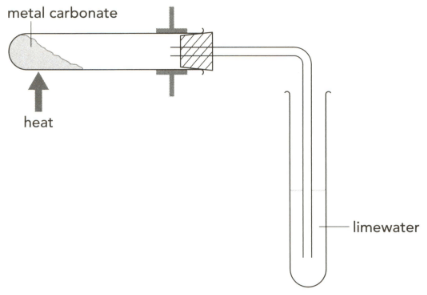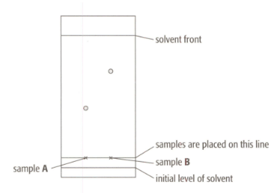A learner investigated the ease with which various metal carbonates decompose on heating. She decided to heat equal masses of each carbonate and noted time how long it took for the carbon dioxide given off to turn lime water in a test-tube cloudy.

The control variable in this investigation is

Important Questions on Practical Skills-1
In an experiment to find the enthalpy change of a reaction between two solutions, the mass of solutions mixed together was and the temperature increased by . The specific heat capacity of the solutions was taken as .
The energy transferred in joules () is
What is the range of the following values of a variable:
i) the independent variable
ii) the dependent variable.
Enzymes are biological catalysts. Purified enzymes are used widely both in research laboratories and in industry. Certain enzymes called proteases can hydrolyse proteins to amino acids. The amino acids can be separated and identified by chromatography. The diagram below shows a typical chromatogram.
| Amino acid | |
| leucine | |
| alanine | |
| glycine | |
| glutamic acid |
_____ hydrolysis leads to amino acids.
Which of the following results is an anomalous result?
To find rate of a precipitation reaction, the concentration of a reactant is taken as and . What is the range and interval value respectively?
_____ is the difference chosen between consecutive values of the independent variable. (Interval/ Range)

